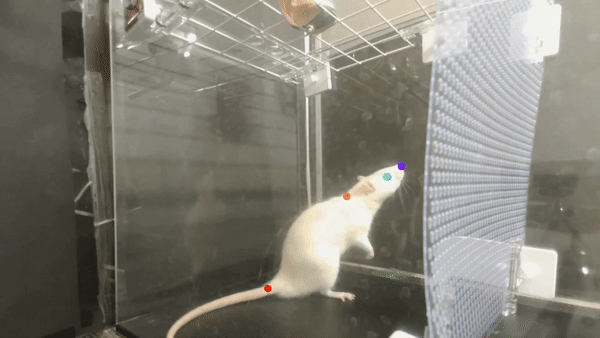Researchers at the University of Tokyo have discovered that rats can synchronize their head movements with the beat of a song.
Keeping the rhythm to music was long thought to be a uniquely human trait. Other animals react to music or can be trained to respond to it -- as seen in online videos of dancing birds, for example -- but this is not the same as the ability to recognize a beat, the study published in Science Advances reads.
To test if rats could move with the beat, the study primarily focused on the animals’ ability to groove to Mozart's Sonata for Two Pianos in D Major, K. 448.
“Rats displayed innate — that is, without any training or prior exposure to music — beat synchronization most distinctly within 120-140 bpm (beats per minute), to which humans also exhibit the clearest beat synchronization,” Hirokazu Takahashi, associate professor at the University of Tokyo’s graduate school of information science and technology, said in a press release.
Accurately moving to a song depends on the speed at which the brain can respond to something.
"This new discovery offers not only further insight into the animal mind, but also into the origins of our own music and dance," the study said.
Using specialized head sensors, researchers could determine even the smallest movements. (University of Tokyo)
The 10 rats were fitted with miniature accelerometers that can measure even the slightest head movements. The study also involved 20 humans who wore accelerometers on headphones. One-minute excerpts from Mozart's K. 448 were played at four tempos of the original speed: 75 per cent, 100 per cent, 200 per cent and 400 per cent.
The original version is 132 beats per minute (bpm) and researchers discovered the rats found the tempo clearest within the 120 to 140 bpm range.
After seeing the success of the Mozart experiment, the rats got to enjoy other music, including Queen's ‘Another One Bites the Dust,’ Lady Gaga's ‘Born This Way,’ Michael Jackson's ‘Beat It’ and Maroon 5's ‘Sugar’.
According to researchers, both the rats and humans bopped their heads to a similar rhythm and "the level of head jerking decreased the more that the music was sped up."
“To the best of our knowledge, this is the first report on innate beat synchronization in animals that was not achieved through training or musical exposure,” said Takahashi.
Prior research says humans can predict upcoming beats in songs, but more studies are needed to confirm if rats can do this as well.
"I am also interested in how, why and what mechanisms of the brain create human cultural fields such as fine art, music, science, technology and religion,” Takahashi said. “I believe that this question is the key to understand how the brain works and develop the next-generation AI (artificial intelligence).”























